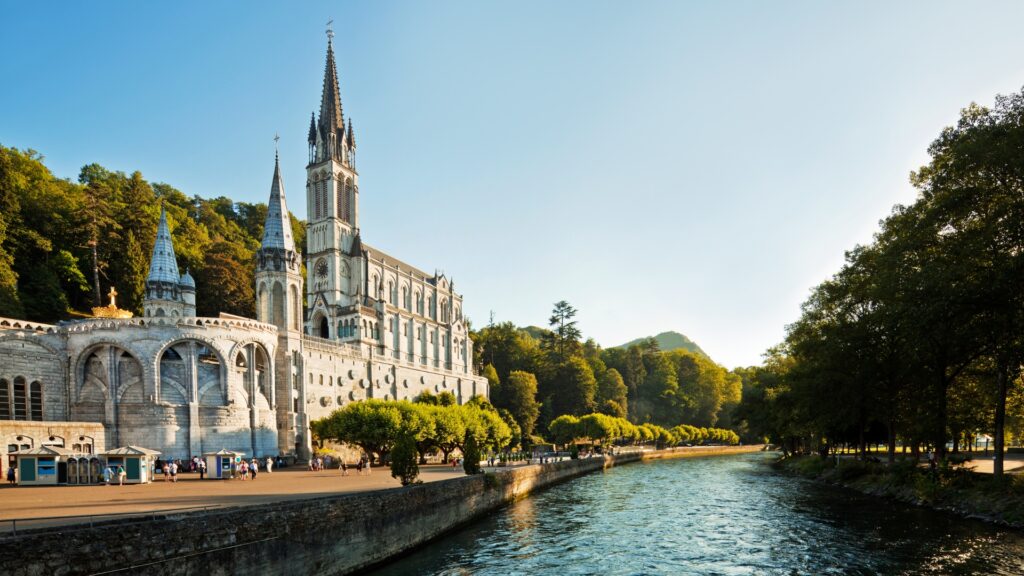St. Patrick’s Day is upon us and that means plenty of green and beer (and, in some places, green beer). Like Valentine’s Day, St. Patrick’s Day has morphed into something far bigger than the original feast day. People of all faiths love marking this saint’s feast with festivities. Sadly, the holy man himself is often forgotten amid all the partying.
Here’s what we know about him.
St. Patrick wasn’t Irish.
He was born in Britain (a colony of the Roman Empire) in the late fourth century. His father was a deacon.
Irish slave traders captured 16-year-old Patrick and brought him to Ireland, where he was forced to work as a sheep herder. In his “Confession,” Patrick notes that he did not know the true God before this time. That changed during his captivity:
“I tended sheep every day and I prayed frequently during the day. More and more the love of God increased and my sense of awe before God. Faith grew and my spirit was moved, so that in one day I would pray up to one hundred times and at night perhaps the same. I even remained in the woods and on the mountain and I would rise to pray before dawn in snow and ice and rain. I never felt the worse for it and I never felt lazy — as I realize now, the spirit was burning in me at that time.”
Patrick eventually escaped Ireland and returned to Britain, where he heard God’s call to the priesthood. He was ordained and eventually consecrated bishop.
But rather than live a life of relative peace in Britain, Patrick discerned that God was calling him to evangelize Ireland. So he set out to bring the Gospel to the very people who had enslaved him.
Back on the Emerald Isle, Patrick had to contend with pagan Druids, who held sway over many Irish people. He succeeded in converting large numbers of men and women to Catholicism, which changed the course of Ireland — and the world — forever.
St. Patrick did not drive snakes out of Ireland.
Although legend claims that St. Patrick banished snakes from Ireland, this is likely a myth. There is no evidence that snakes ever inhabited the region.
St. Patrick did drive paganism out of the hearts of many Irish, so the story still has symbolic value.
St. Patrick’s influence extends worldwide.
Catholicism remains strong in Ireland. But St. Patrick’s influence is not limited to this country. Throughout the late 19th and early 20th centuries, Irish Catholics immigrated to the United States in droves and left an indelible mark on the country.
Some famous Irish American Catholics include Archbishop Fulton J. Sheen, author Flannery O’Connor, Fr. Patrick Peyton, and singer/actor Bing Crosby. Irish Catholics built churches in many major U.S. cities and many were ministered by clergy of Irish descent.
Follow in the footsteps of St. Patrick.
This summer, Verso Ministries and St. Vincent Archabbey will lead a Catholic pilgrimage to experience the life of St. Patrick. Join us to visit sacred sites, including Downpatrick and Armagh, as well as the beauty of Lough Derg and the incredible Cliffs of Moher. Learn more here.
“Saint Patrick’s Breastplate” Prayer
Christ with me,
Christ before me,
Christ behind me,
Christ in me,
Christ beneath me,
Christ above me,
Christ on my right,
Christ on my left,
Christ when I lie down,
Christ when I sit down,
Christ when I arise,
Christ in the heart of everyone who thinks of me,
Christ in the mouth of everyone who speaks of me,
Christ in every eye that sees me,
Christ in every ear that hears me,
I arise today through a mighty strength,
The invocation of the Trinity,
Through a belief in the threeness,
Through a confession of the oneness,
Of the Creator of Creation.
Amen.






